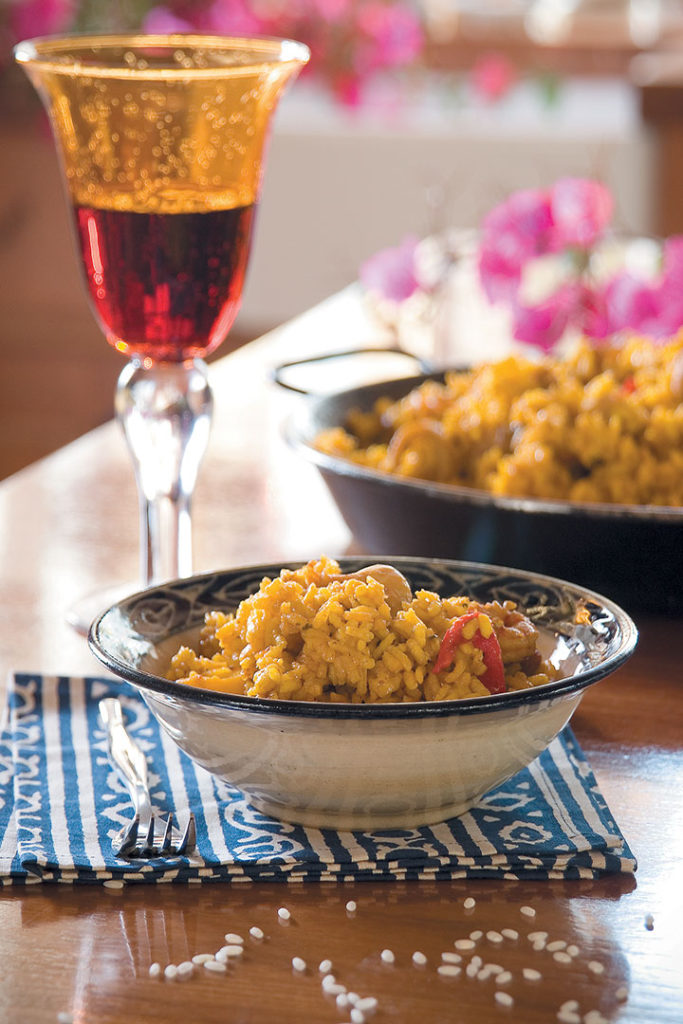Paella originated in the Valencia region of Spain and gets its name from the broad shallow pan (paella or paellera) in which it is traditionally cooked and served. This Authentic Spanish paella version was inspired by Juan Antonio Obregon, the commercial attaché from the Spanish Embassy, and his wife Eva. Crisp dry rosé is the perfect lunchtime tipple.
Authentic Spanish paella
Ingredients
- 100ml Spanish olive oil
- 6 deboned chicken thighs, halved
- 2 green peppers, seeded and cubed
- 2 onions, cubed
- 2 tomatoes, cubed
- 2 garlic cloves, finely chopped
- a handful of fresh-flat leaf parsley, chopped
- 2 litres of water
- 1kg prawns, peeled and cleaned, shells and heads reserved
- a pinch of saffron
- a pinch of smoked paprika
- salt, to taste
- 600g short-grain rice
- 500g calamari rings
- 250ml (1 cup) white wine
- 2 pimentos, thinly sliced
Instructions
Heat the olive oil in a large frying pan, add the chicken and fry until cooked and crispy. Add the pepper, onion, tomatoes, garlic and parsley, and fry for a further 5 minutes. Set aside until needed.
Pour the water into a deep pot and bring to the boil. Add the reserved prawn shells and heads, saffron, smoked paprika and salt. Boil for 10 minutes. Drain through a colander, discarding the heads and shells and reserving the stock.
Heat a paellera and add the chicken mixture. Add the prawns, rice, calamari and wine. Immediately pour in the stock and gently stir to combine. Place two wooden spoons across the pot and cover with newspaper. This distributes the heat evenly, helping the rice to cook on top. Leave to cook, turning the pan occasionally to make the ingredients cook all around the pan, about 20 minutes. Paella does not need to be stirred, just allow the stock to be absorbed by the rice.
Garnish with the pimentos and serve while hot.
Notes
If you don’t have a paellera, use a large frying pan. The stock can also be made from fish bones, fish heads and any other fish pieces. It is important that the ratio of rice to water is correct – use double the quantity of water to rice. Don’t worry if some of the rice sticks to the bottom of the pan, this becomes a traditional part of the paella called “sacorrat”. You can also add mussels and clams to the paella. Turn to page 78 for a step-by-step guide to perfect paella.

